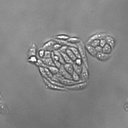[Surgical treatment of prolapse using laparoscopic promontofixation: technical principles and results].
Lykilorð
Útdráttur
Abdominal sacrofixation is the gold standard for the treatment of the prolapse. There are many ways to do it: technical, meshes, dissection, fixation of the mesh, associated procedures. Laparotomy is the classical procedure for sacrofixation. The basis of sacrofixation is to dissect the weak vesicovaginal and rectovaginal fascias and to replace with meshes spread out on the entire dissected surface.
METHODS
Suprapubic abdominal incision, dissection of the anterior vertebral ligament on the right of the promontory, dissection of the vesicovaginal and rectovaginal spaces; meshes are fixed anteriorly on the vagina, posteriorly on the levator ani and uterosacral ligaments. The peritoneum on the meshes is carefully closed to avoid later ileus.
RESULTS
Redux is globally 10% (74-98%); the redux occur in the two years. Meshes exposure, spondilodiscitis, ileus are uncommon. In comparison with the vaginal procedures, there is less redux, less dyspareunia. But the drawbacks are postoperative pains, scars, eventration, low dissection difficult and some contraindications to the abdominal sacrofixation: respiratory insufficiency, morbid obesity, multi-operated abdomen, ascitis, aortoiliac aneurysms.


